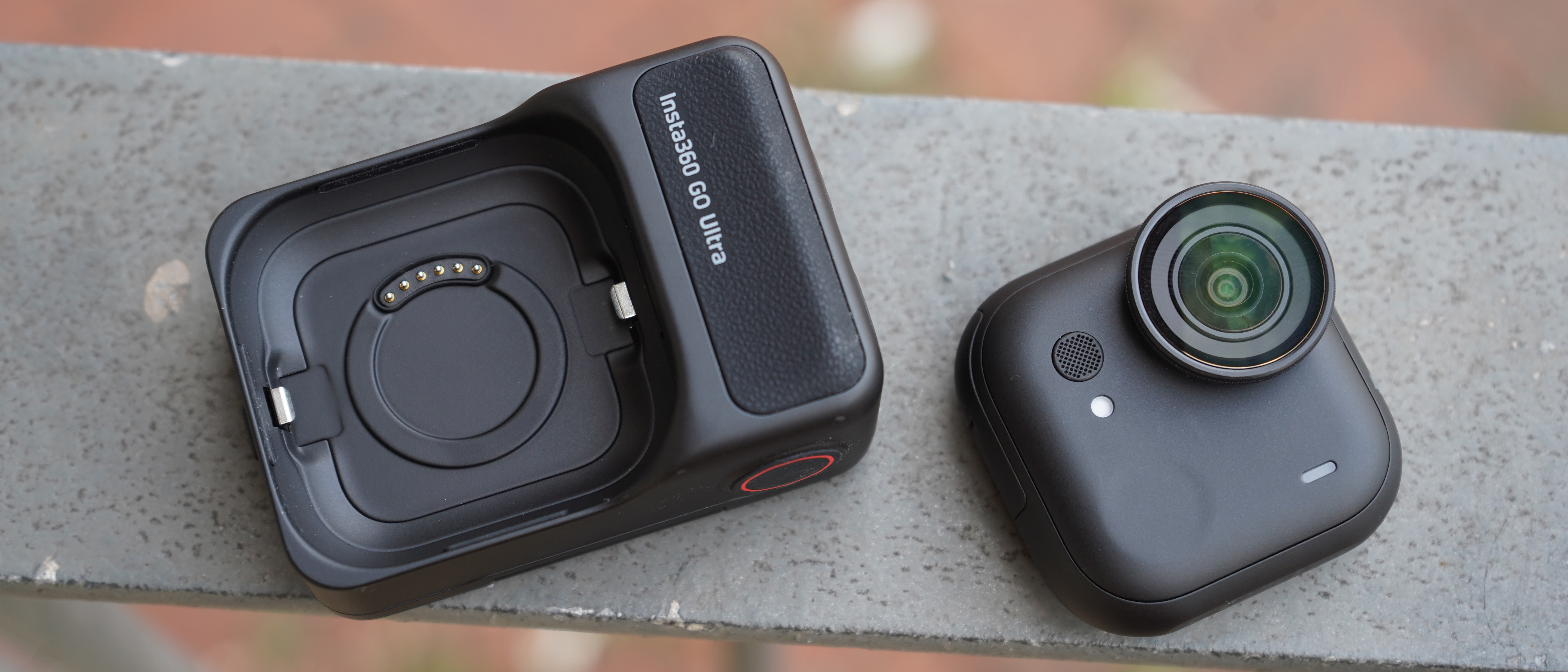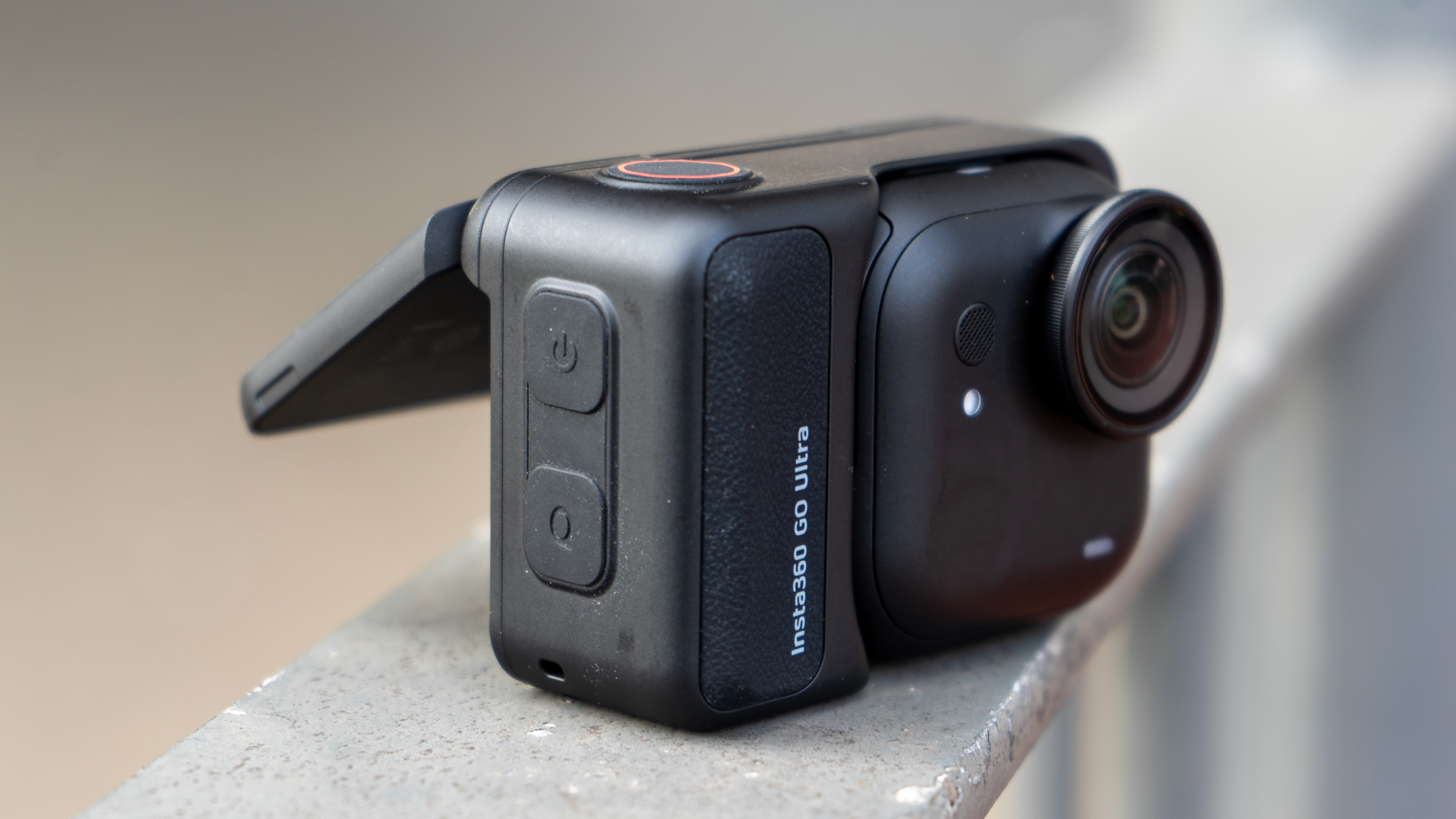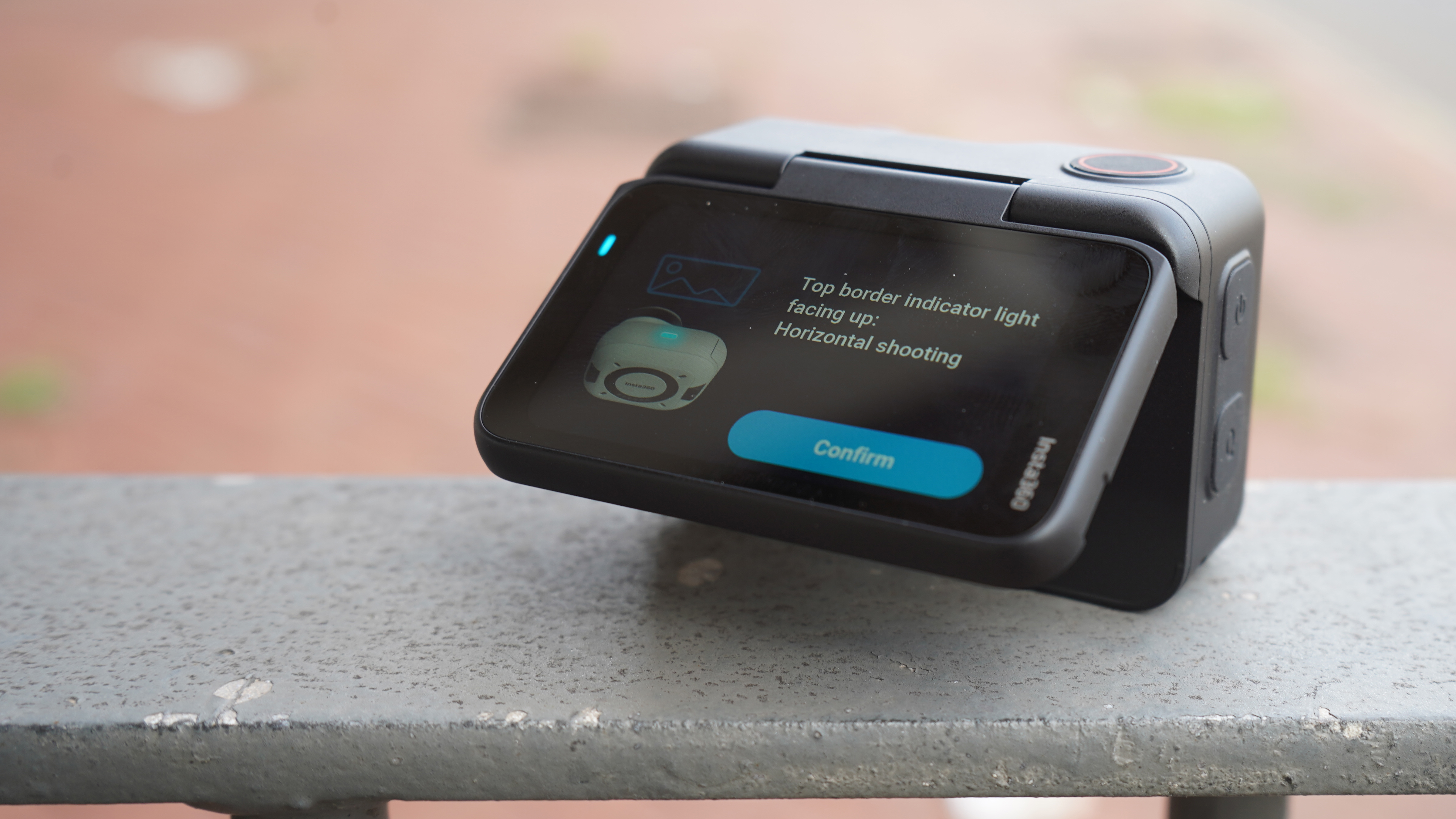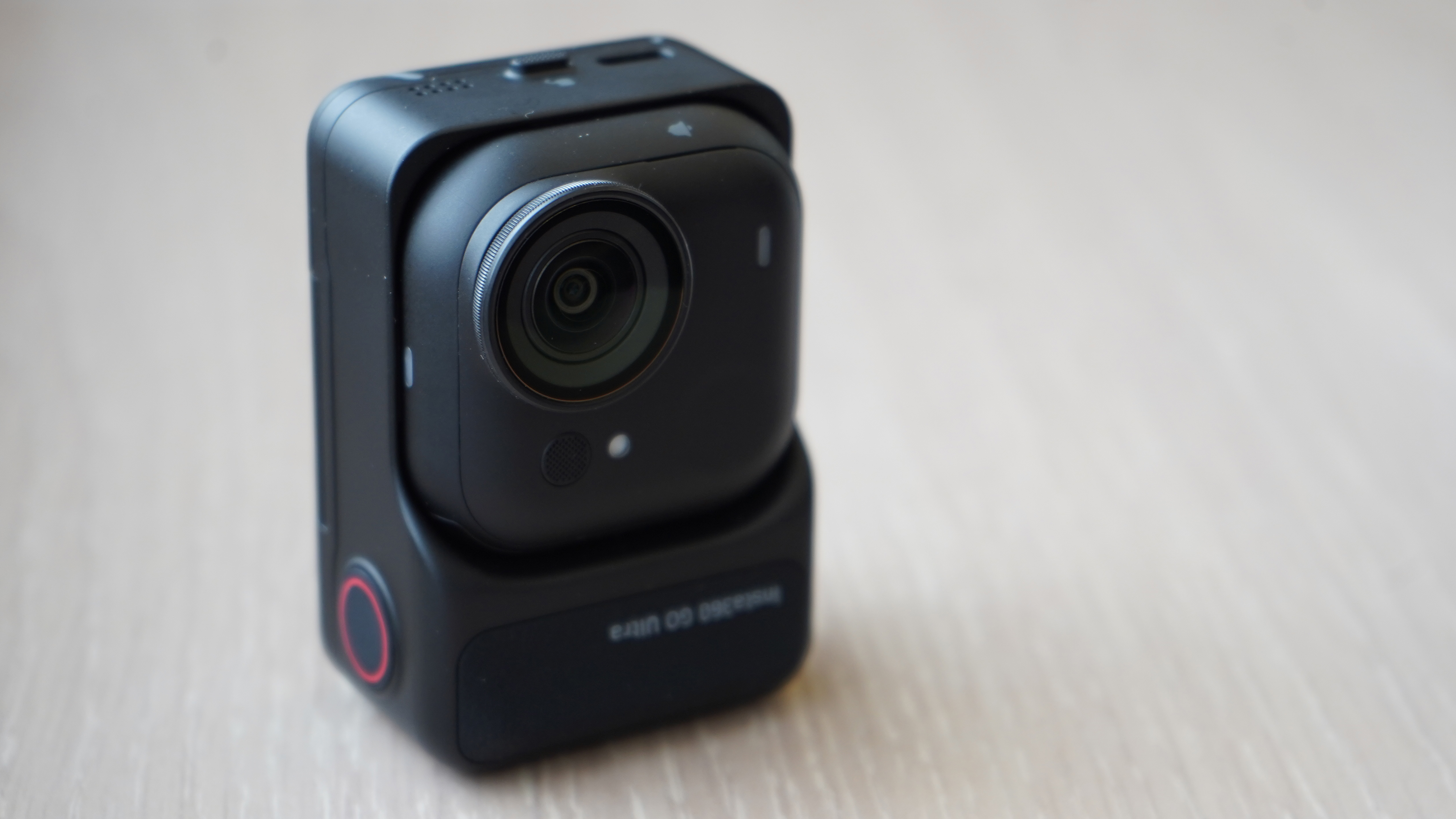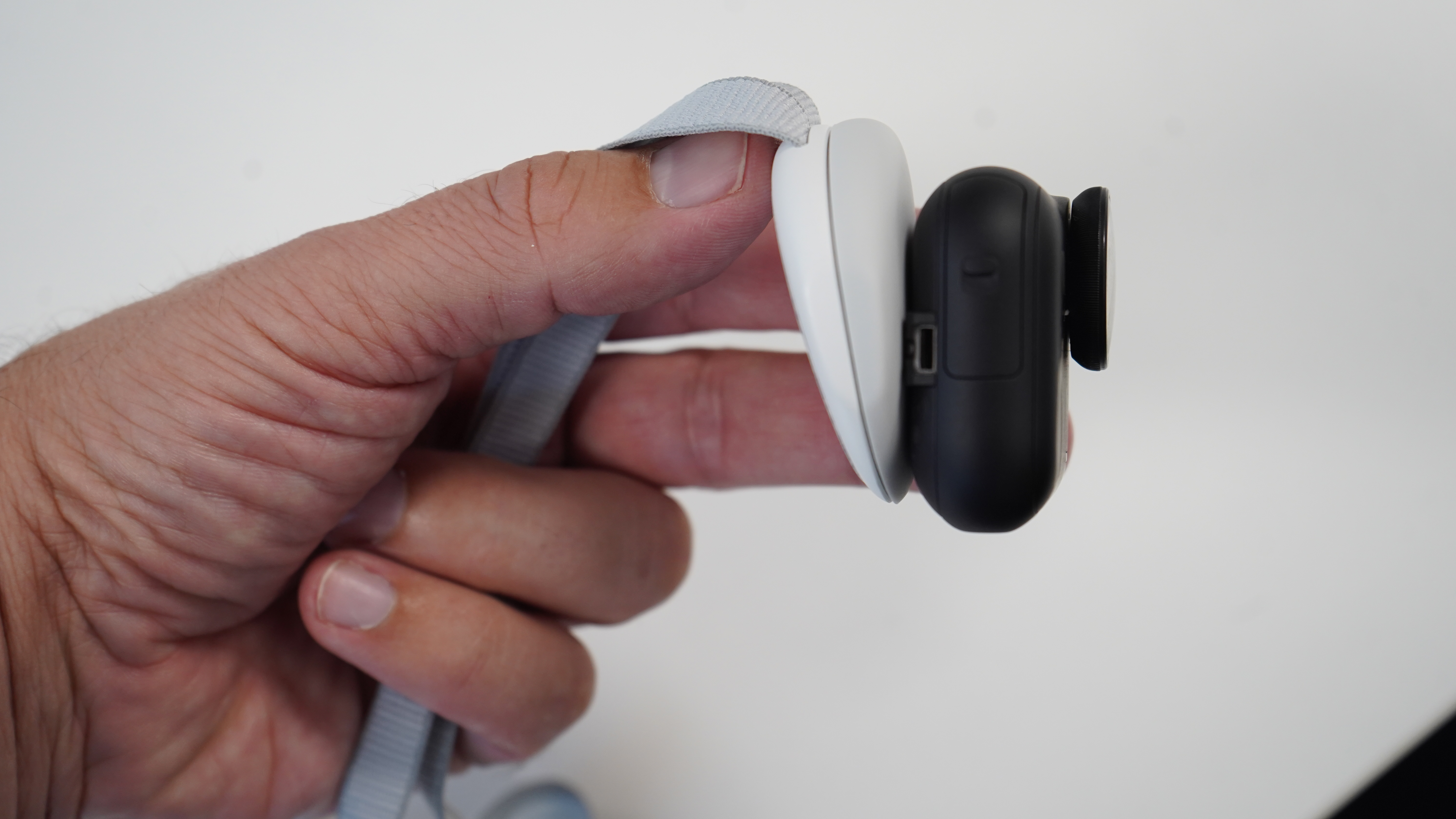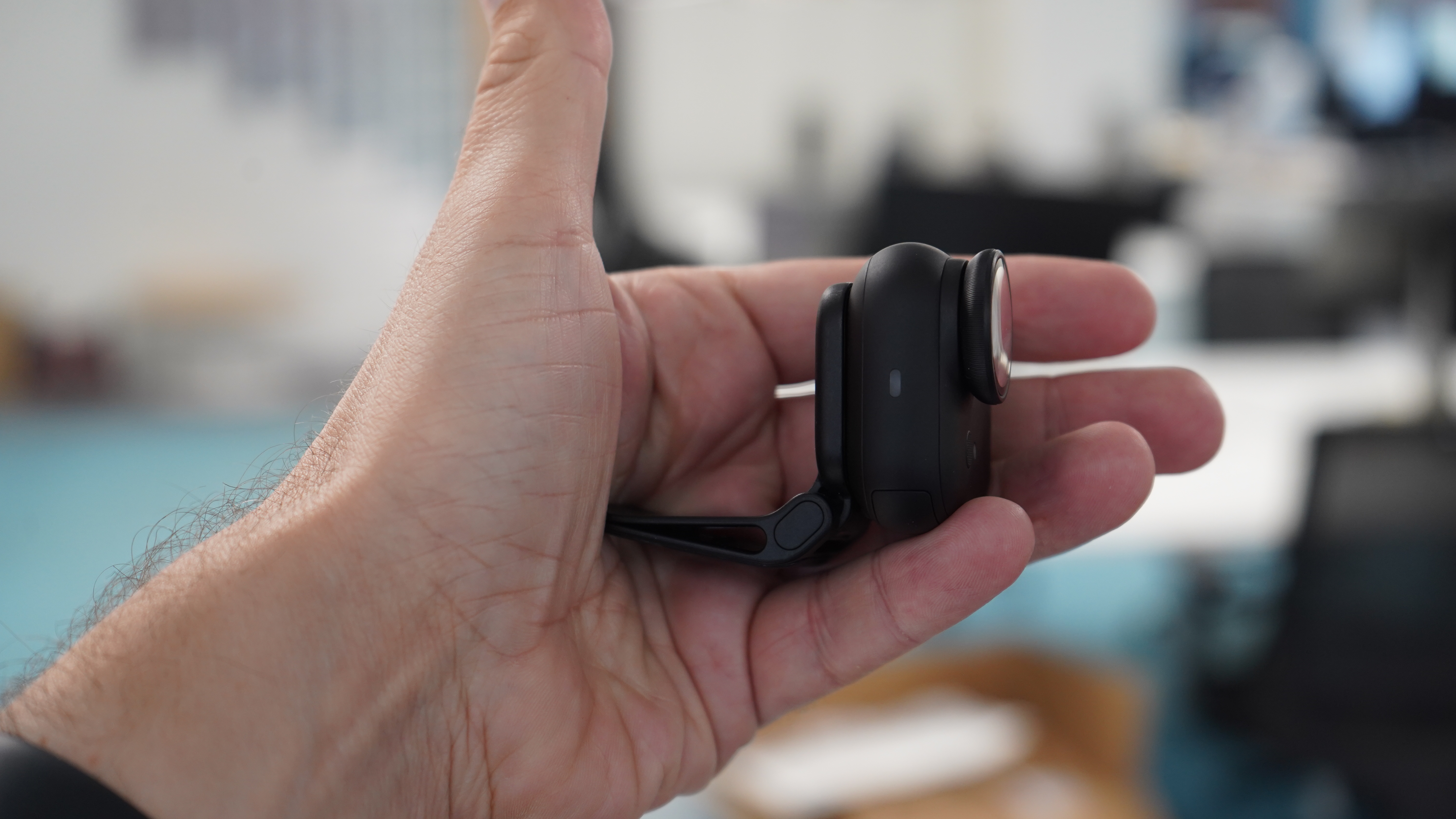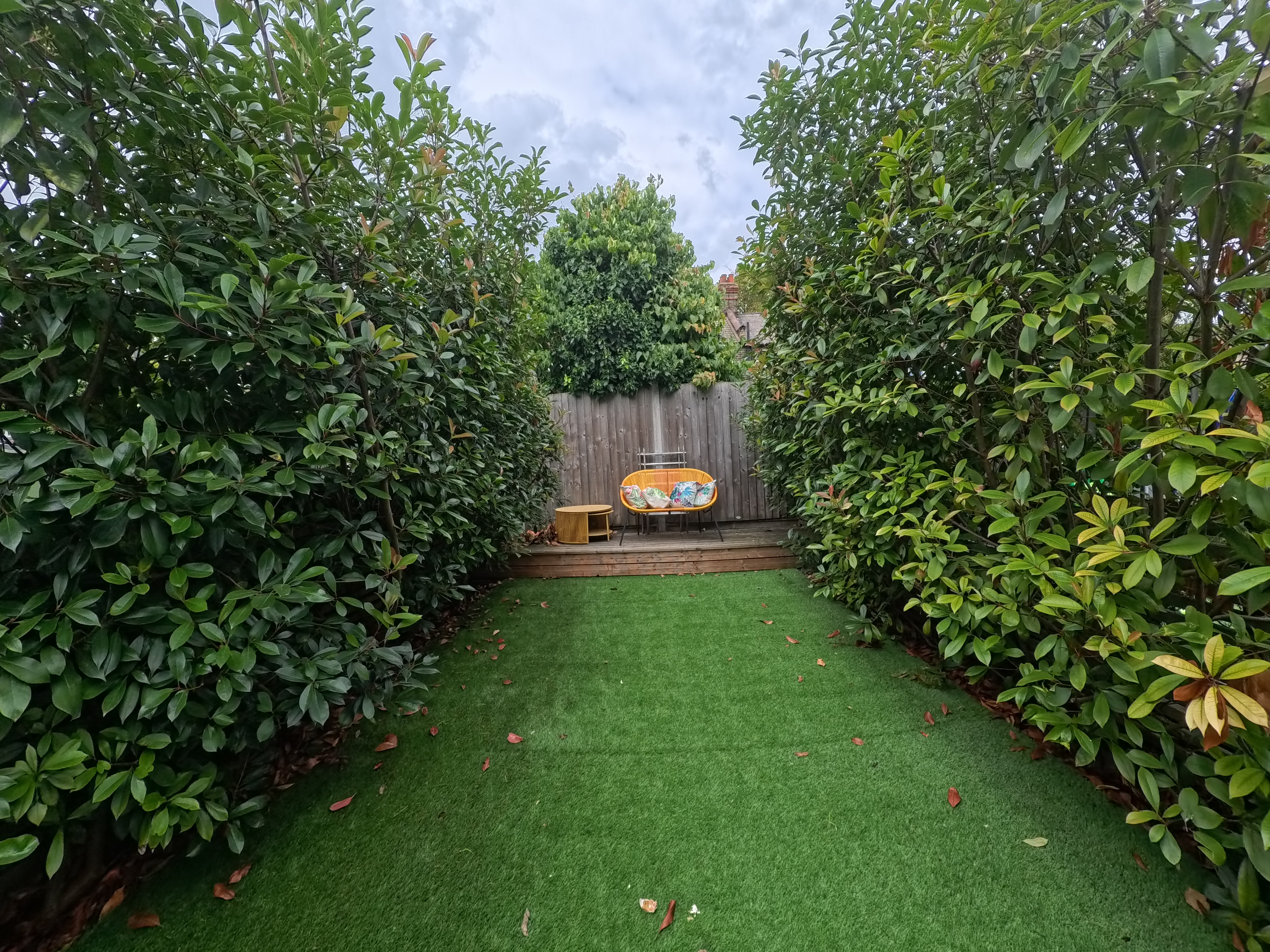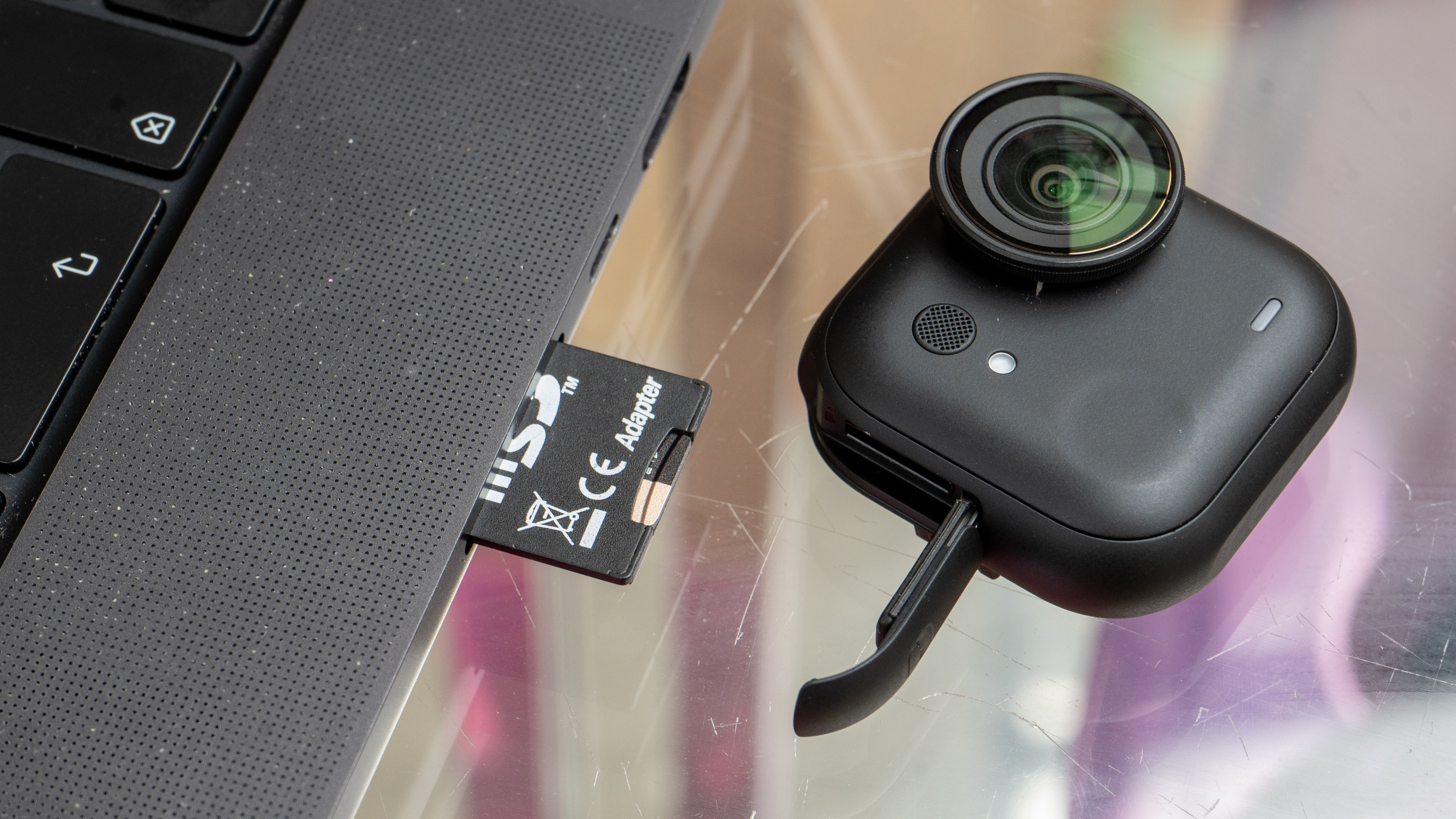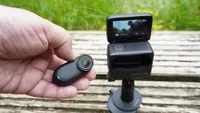Digital Camera World Verdict
Get the action where you wouldn't or couldn't put your phone, and still get the quality, the Go Ultra solves all the issues of the body-worn Go 3S and produces pro-quality output while still being nearly as tiny as its predecessors. It's not a bad alternative to a premium action camera either!
Pros
- +
4K 60fps capability
- +
Much better in low light
- +
Fast workflow thanks to MicroSD card slot
- +
Waterproof to 10m / 33ft
Cons
- -
Slightly bigger camera than Go 3 /Go 3S
- -
Pendant is better, but can't be angled up, only down
Why you can trust Digital Camera World
Insta360 has made its signature body-worn camera a little bit bigger and a lot more capable. It might be thought of as a gamble when the signature feature is the fact it’s a very compact camera, but there are good reasons to do it – not least a faster workflow. The question is whether that gamble is one that’ll please users.
In previous iterations of the Go series, the thumb-sized camera housing came in at about 35g – now that’s a square and 53g – but big difference is that the video is recoded to a MicroSD inside the camera itself, offering a much faster and more reliable workflow for busy creatives.
There are a lot of generational improvements too, including 60fps 4K instead of 30fps, active HDR, and a bigger image sensor for low light, so lets dive in and decide whether this is the action camera for every occasion?
Insta360 Go Ultra: Price
Launching in August 2025 in two packages, the 'Standard Bundle' and the 'Creator Bundle', and two colors, 'Midnight Black' and 'Arctic White', the device seems competitive with premium action cameras like the DJI Action 5 Pro or GoPro Hero 13 Black.
It offers a different approach to creativity than a traditional action camera, but for many, perhaps a more useful one. The Standard bundle still includes the camera, a cord, the magnetic pendant, the clip, a USB-C cable and a lens guard and will sell for $449 / £429 / AU$759, while the Creator Bundle adds a mini 2-in-1 tripod and a quick release mount and a pivot stand and comes in at $499 / £429 / AU$839.
Insta360 Go Ultra: Specs
Video resolution | 4K 60fps |
Image sensor | 1/1.28-inch |
Field of view | 156-degrees |
Battery life | 70 min in camera / 180 minutes in body |
Charge time | 0-80% in 12 minutes |
Weight | 53g |
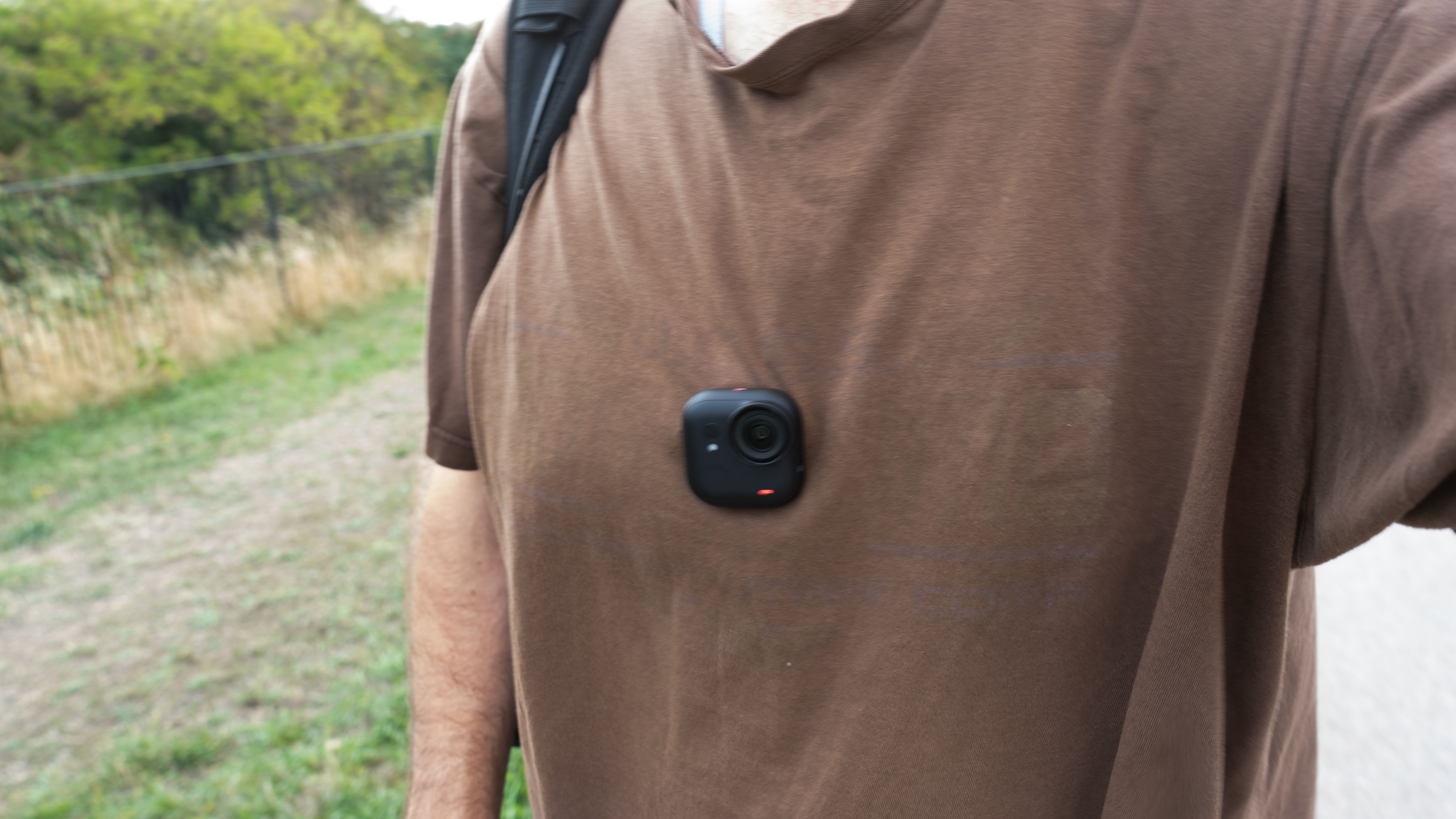
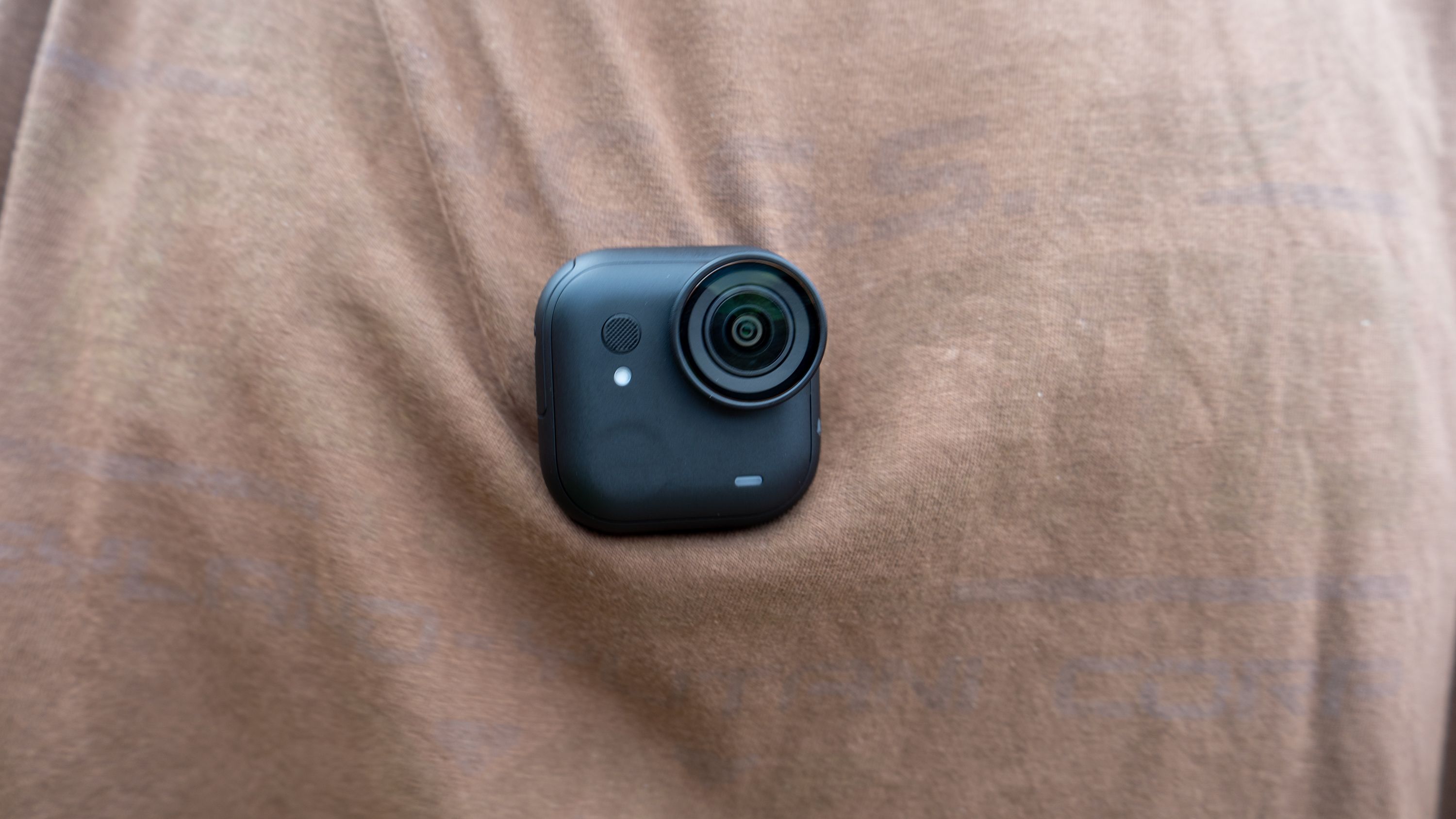
Insta360 Go Ultra: Build and handling
At first glance the Go Ultra has the look of a traditional compact camera made the size of an action camera; there is a protruding lens at the top right (as you look at the front) and a rubber grip on the left hand side of the very sturdy shell, while a red rim helps the rubberised shutter button leap from the top surface.
A moment’s closer examination, however reveals that not only has the form got a small LED and a light sensor on the front, plus a microphone, but the square around the camera isn’t just design – the recess is clearly because the camera isn’t removable. Obviously that’s no spoiler – you knew that already – but the design does hide that elegantly (the release is a press button on the side next to the USB-C socket).
The best camera deals, reviews, product advice, and unmissable photography news, direct to your inbox!
At the rear is a touchscreen, hinged at the top (with a reassuringly firm mechanism) which can turn through a full 180-degrees for vlogging.
While the socket and camera release are at the left hand side, as seen from the back, the right-hand side has the power and quick buttons – both rubberised. The base of the unit has just two recesses for Insta360’s quick-release mounting system, meaning the camera (when in the hub) is compatible with the same mounts that the previous generation of Go fitted into.
Once removed from the clamps of ActionHub – which contains more battery life and a touchscreen – the camera retains a few means of communication with the user. Front and top it has LEDs which can show different colors, and it houses a reasonably loud speaker.
Diagonally opposite the lens on the front is a thinner part of the shell which can be pressed and serves as a physical button – the only one on the unit. The rear has six metal contacts but, when out of the hub, the camera is waterproof and has up to 70 minutes of battery life.
The camera is designed to be worn or attached magnetically, and both bundles are supplied with a neck pendant that can be worn beneath a shirt, which both my fiancée and I tried successfully.
A clever touch about this new version is that the angle of the camera can be adjusted by twisting the pendant; it is built of two surfaces at a slight diagonal and rotating them alters it from being flat to a wedge shape, offering alternate perspectives – very smart. This is especially helpful with a curvy decolletage, my fiancée noted (though, to be honest, it was also an issue I had in the past too!)
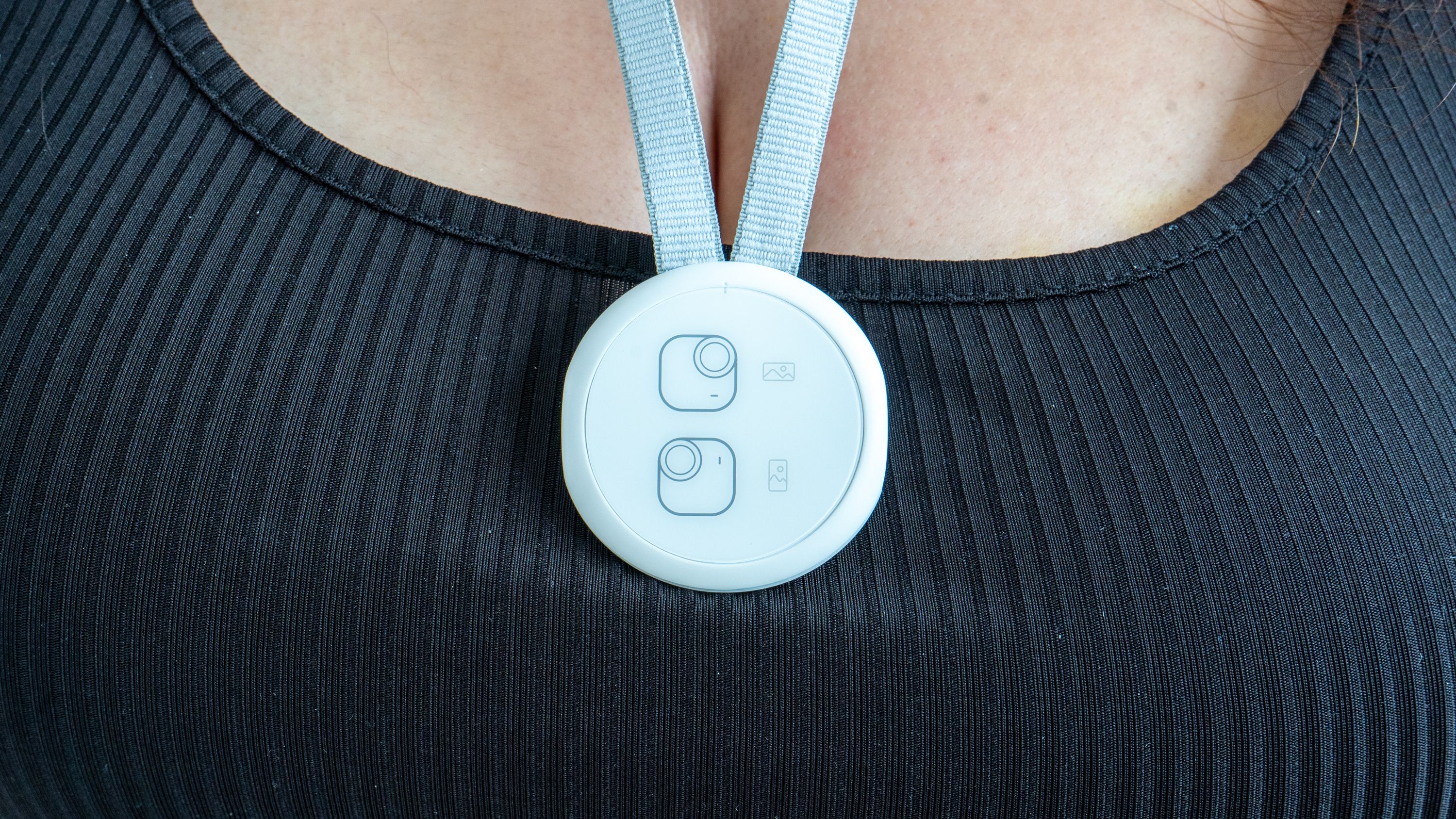
This is how the pendant looks when its worn outside clothing. It even has a reminder of orientation.
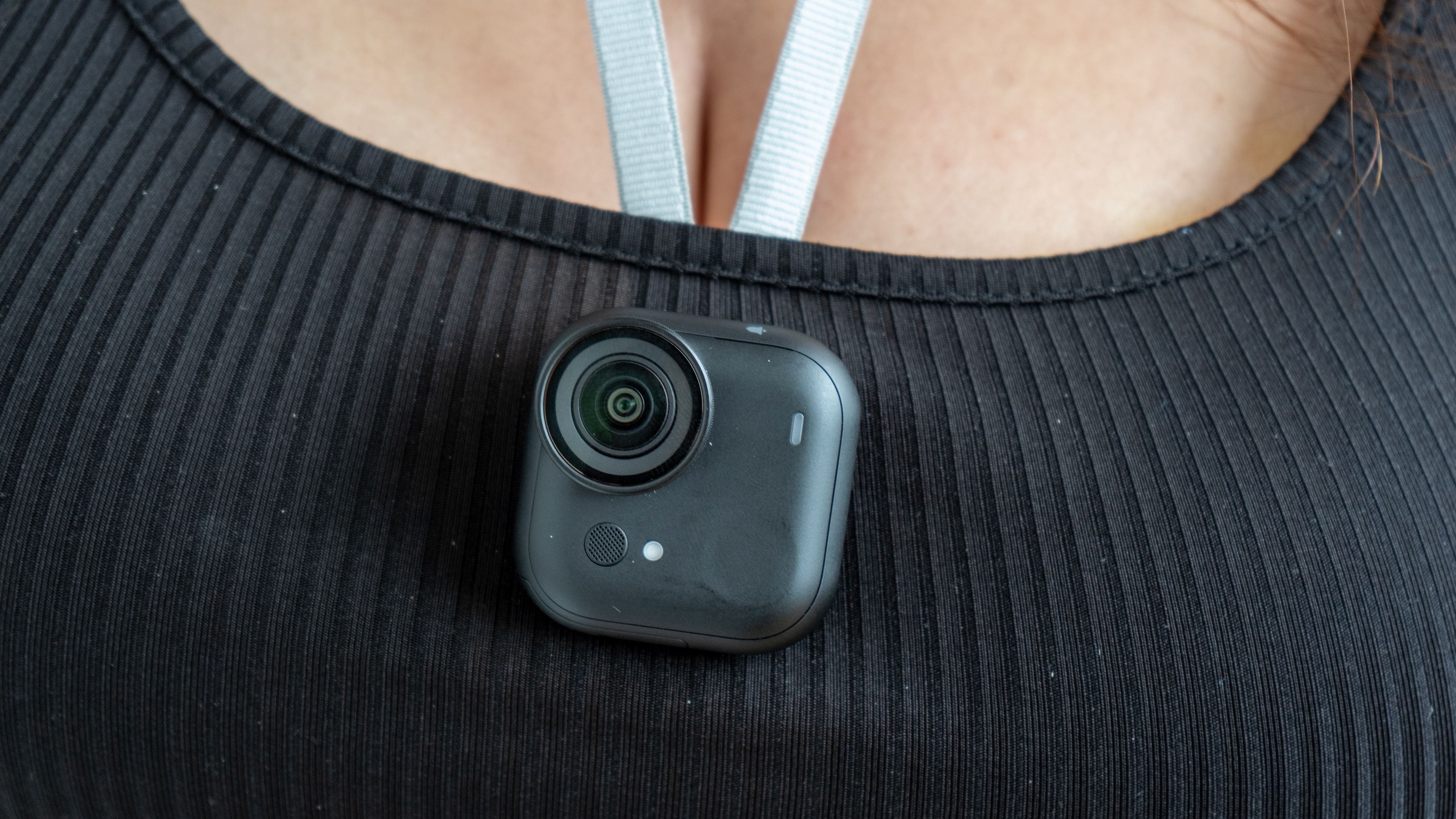
The pendant is a magnet, so can be tucked behind clothing and support the camera successfully and discretely.
Insta360 also offer a clip which can easily attach to a baseball cap and the camera can simply pop on or off for a slightly higher eyeliner perspective.
The camera does not need to be in the housing for the touchscreen to provide a live preview or offer controls, but – in common with most modern action cameras – it is also possible to take control using your phone.
Insta360’s app is very mature, and makes the process of connecting to the camera and taking control pleasingly simple. The Bluetooth connection takes a few seconds to make, but after that it has a slick interface for remote control and file downloads.
The Auto Edit AI feature is great for social too, taking 5 potentially quite long clips (action cameras can be 'fire and forget') and creating an edit for you in moments.
Insta360 Go Ultra: Performance
The camera is visibly better than its predecessor, so much so that the comparison doesn’t seem fair to make, but that is my job.
Personally, I felt the wider lens solved the biggest issue with the Go 3S, which was capable of 4K video which looked good (at least in good light) but could be a little problematic where it wasn’t directed straight. When something is body-worn, that is a bit of an inevitability, so a wider field of view does add a much appreciated margin of error for this camera’s best use cases.
In terms of quality, the low-light performance is very noticeable. I took the camera into a creepy wooded path in East London and held it next to its predecessor and the difference was clear – there is much more detail and the scene’s color is more natural and easier for the eye to read.
In this garden shot the standard JPEG shows detail in the lit and unlit sides of the hedges (the camera also creates a .dng)
While previous cameras had solved computer transfer with a Fast File Transfer Cradle, it is not as industry standard as simply using a MicroSD card. This felt more straightforward and for those with a multi-camera workflow, is a lot more natural and easier to adapt to.
Insta360 Go Ultra: Sample Video
Insta360 Go Ultra: Overall Verdict
Insta360 has pulled an excellent device out of the bag here. I was ready to be a bit disappointed because, if we are honest, size does matter in this product category more than many, but, in practice, I found it equally easy to wear this camera as its predecessor; no appreciable weight difference even thoguh my T-shirts are all a bit baggier than last year (yes, I've lost weight).
In fact two things more than offset the increase in the camera's weight against the Go 3S; the new adjustable pendant and wider field of view. Improvements to the optics and options increase flexibility and literally outweigh something that isn't really that noticeable anyway. As for physical size, that is more of a personal choice but in neither case will the camera go unnoticed by a nearby person, so adding a tiny bit of additional volume for a lot more capability would be my choice.
Ultimately, then, a still surprisingly small camera is capable of capturing results more or less on a par with a premium action camera. If you're likely to be using quick cuts and one other camera, it seems to me far better to use something like this which is far more flexible unless you have a strong need for the best possible low light, in which case the Ace Pro 2 or DJI Action 5 Pro are still the best, but you pay for that capability with relative bulk.
Otherwise, perhaps this is the future of action cameras?
Features | 4K, Find My, app syncing and EIS are all impressive – as is the quality of the app. |
Design | The addition of an adjustable pendant is a stroke of brilliance, while the hub-and-camera design is also very elegant with this new generation. Chic and functional. |
Performance | Imaging is much better than expected for a device so compact thanks to the new sensor, and battery life had me floored. |
Value | I think this camera represents good value because I appreciate quality, but it's true that the now discounted Go 3 and 3S are also pretty good and offer a challenge here! |
Alternatives
The Insta360 Go 3S (this camera's predecessor) is also a 4K camera you can wear and get amazing video. Plus it's even smaller and even cheaper. There are a lot of irritations, not least the field of view, which are very apparent now the new Go Ultra has solved them, but as a way into capturing kind of footage for your creative works the value-for-money is certainly to be appreciated.
How I tested the Insta360 Go Ultra
I regularly test action cameras of all kinds so I can keep the guides to the best action cameras and best 360 cameras up to date, and, as is the case with every camera designed for capturing real life experiences, I have found the best thing to do is to head out with the camera and use it as much as possible on its own terms, using it in as many real life situations as possible – good light, bad light, changing light. (Including night and artificial, of course.)
I stuff the camera in my bag, and of the course of a few weeks I take it out at different times and I see how quick and easy it can adapt to my lifestyle. I also made sure to test the microphone by talking to the camera while it was in my hands, and in varying winds.

With over 20 years of expertise as a tech journalist, Adam brings a wealth of knowledge across a vast number of product categories, including timelapse cameras, home security cameras, NVR cameras, photography books, webcams, 3D printers and 3D scanners, borescopes, radar detectors… and, above all, drones.
Adam is our resident expert on all aspects of camera drones and drone photography, from buying guides on the best choices for aerial photographers of all ability levels to the latest rules and regulations on piloting drones.
He is the author of a number of books including The Complete Guide to Drones, The Smart Smart Home Handbook, 101 Tips for DSLR Video and The Drone Pilot's Handbook.
You must confirm your public display name before commenting
Please logout and then login again, you will then be prompted to enter your display name.
